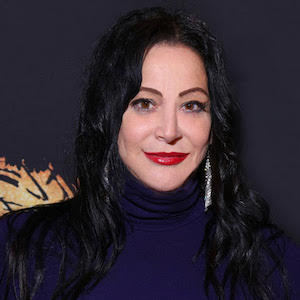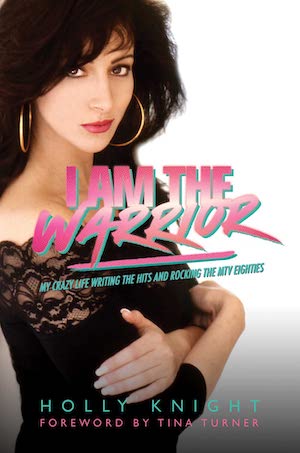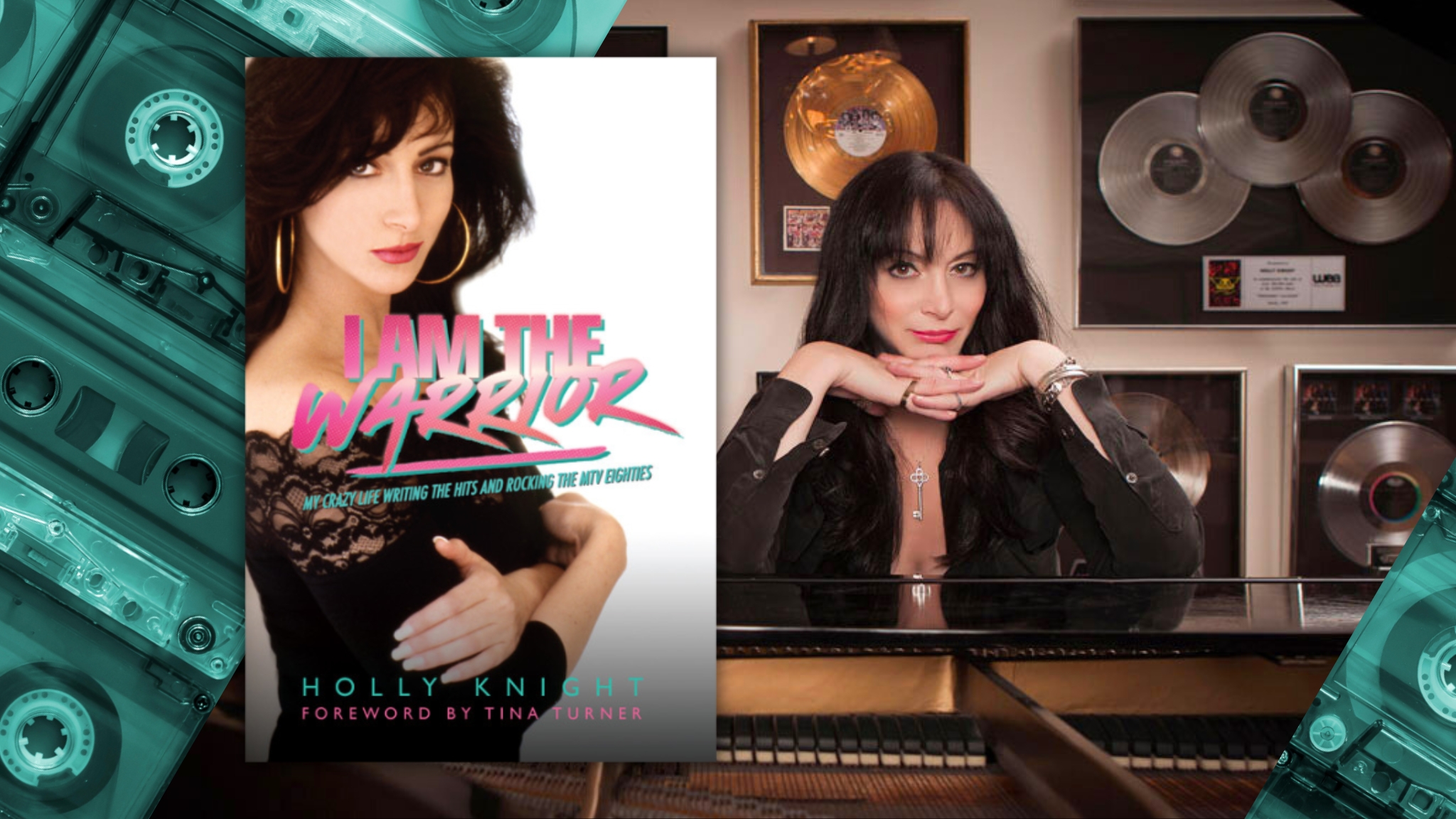I Am the Warrior: My Crazy Life Writing the Hits and Rocking the MTV Eighties by Holly Knight
Whether you’ve heard Holly Knight’s name before, you’ve certainly heard her music. From Tina Turner’s “The Best” to Pat Benatar’s “Love Is a Battlefield” and Patty Smyth’s “The Warrior” — her hit tracks celebrated female empowerment, inspired listeners and shaped pop and rock music for years to come.
Knight’s memoir, I Am the Warrior: My Crazy Life Writing the Hits and Rocking the MTV Eighties (Permuted Press) chronicles her journey from a tumultuous childhood to the recording studios and stages of the 70’s and 80’s music industry. We got the chance to talk with Knight about her incredible career and what it was like to document it on the page.
Q: What first drew you to music and songwriting?
A: I was born with a musical soul. Music was my first language really. I would hear my mother practicing piano when I was four and I would play piano on any surface I could — even my legs until she would get up from the piano, and I would then climb onto the piano bench and pick the notes that I heard by ear out on the piano. After a few weeks of doing this, my mother asked me if I would like to take piano lessons, to which I yelped yes. Songwriting came later on when I was around eighteen and I had helped to form my first band, Spider. Until then my desire was more focused on being in a band as a musician and being a rock star.
Q: What was it like entering the music industry as a woman during the 1970s?
A: The music business in the late 70s and 80s, when I was pursuing it was a patriarchal boys club. There were plenty of female vocalists, but certainly not many songwriters, producers, record execs, engineers or musicians. Most of that belonged to the dominion of men. I was an anomaly as a songwriter and musician. I didn’t mind — in fact, I loved it because it enabled me to stand out.
Q: You mentioned that you didn’t immediately make the connection between many of your songs’ themes and the struggles of your childhood. Was that a topic you knew you were going to tackle in this book?
A: I felt that it was okay to discuss the emotional turmoil that I had endured as a child because my parents had both passed and I felt that a lot of readers would relate to what I had gone through. It was, of course, cathartic and allowed me to unpack some things that I’d been holding onto for a lifetime. The fact that I’d been putting a lot of that emotion into so many of my songs was something I was unaware of at the time. It was a journalist who pointed out to me that a lot of them were about “fighting.” I mean yeah, titles like “Love Is A Battlefield,” “Invincible,” The Warrior“ and “Better Be Good To Me’ would certainly cause someone to question why. But what I came to realize is that my songs were about fighting for something, not fighting with someone.
Q: You give some great insight into not only what the audience sees of a performer or band, but what goes on backstage and in the recording studio. What did you hope to unveil with these behind-the-scenes looks?
A: I wanted to put readers in the room with me. To feel what I felt working with so many high-profile people — the fun parts, the frustrating things, the loneliness and camaraderie … and also to give people a peek behind the curtain of what really goes on. Most people assume that recording artists, big or small, write their own songs. Often that’s not the case, and the artists don’t go out of their way to point out who wrote their last hit song — the one that everyone is singing.
Q: Was there a memory you recounted in the book that ended up being your favorite scene? And was there a scene that was particularly challenging to write?
A: I think some of the stories with respect to KISS are some of my favorite ones because they are not only kind of mind-blowing, but funny.
Also “The Night Of The Thirty Toes” with Heart, I love. In contrast, the chapter with Rod Stewart and his band, and the one on Bon Jovi were difficult ones to write because of the negative experiences which I had to relive in my head as I wrote them down.
Q: What do you hope readers will take away from your book?
A: Well, the book is dedicated, “to anyone who ever had a dream and was told no,” — because that was me, and against all odds, I made a rather nice career out of writing hit songs that people still love decades later. I hope my memoir will inspire people to follow their dreams, whatever they are. It’s so important to believe in yourself, because oftentimes, other people won’t — until they do.
For those who lived through that era as young adults, my hope is that they get a rush of nostalgia, remembering that time, where they were when they heard this song or that song — or maybe even one of mine, and smile, maybe laugh at some of the goofiness. Also, I hope they find the stories behind the creation of some of my songs interesting. There are also plenty of stories about the friendships, who I dated and hung out with — what memoir would be complete without the juicy and provocative parts?
I tried to remain honest and tasteful at the same time.
And for the new generation of young adults that weren’t even born yet, my hope is that in getting lost inside my pages, they can journey back with me to a very unique and crazy time and wish they had been there.
My book has been described as a love letter to the EIGHTIES. I’m good with that.
 A vital force behind the sound of some of rock’s most powerful female artists, Holly Knight’s iconic musical imprint is woven into the very fabric of the MTV generation. Throughout the 1980s, singer/songwriter Holly Knight composed anthems that became the soundtrack for millions of people’s lives and also created and crafted empowering odes to independence, liberation, and equality. These universal themes have never been more relevant than they are today which is why we still hear her music every day. On television, films, and commercials, Knight’s work has become not just ubiquitous – but also generation-defining.
A vital force behind the sound of some of rock’s most powerful female artists, Holly Knight’s iconic musical imprint is woven into the very fabric of the MTV generation. Throughout the 1980s, singer/songwriter Holly Knight composed anthems that became the soundtrack for millions of people’s lives and also created and crafted empowering odes to independence, liberation, and equality. These universal themes have never been more relevant than they are today which is why we still hear her music every day. On television, films, and commercials, Knight’s work has become not just ubiquitous – but also generation-defining.
For all of the dozens of recognizable songs she has written, however, working with legends including Rod Stewart, Kiss, and Aerosmith, it was her collaborations with female artists that truly broke through, giving a new voice to women all over the world. Defiant, purposeful and ultimately triumphant, her work with Tina Turner, Pat Benatar and the band Heart, among others, also helped pave the way for the next generation of defining female musical masters including Amy Winehouse, Adele and Lady Gaga. It was the music and words she wrote. But it was also the visual representations on MTV that helped define Holly’s work for the masses.




